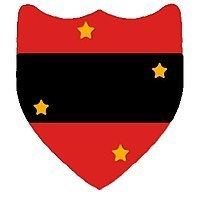Active 1908–present | Country India Type Command | |
 | ||
Similar Ghana Army, Indian Air Force, Indian Army, Indian Armed Forces, Ghana Armed Forces | ||
Southern Command is a formation of the Indian Army, active since 1895. It has seen action during the integration of several Princely States into modern India, during the 1961 Indian Annexation of Goa, and during the 1965 and 1971 Indo-Pakistani Wars. Lieutenant General PM Hariz is the General Officer Commanding.
Contents
History
The Presidency armies were abolished with effect from 1 April 1895 when the three Presidency armies became the Indian Army. The Indian Army was divided into four Commands (Bengal Command, Bombay Command, Madras Command and Punjab Command) each under a lieutenant general.
In 1908, the four commands were merged into two Armies (Northern Army and Southern Army): this system persisted until 1920 when the arrangement reverted to four commands again (Eastern Command, Northern Command, Southern Command and Western Command). In 1914, the Southern Army consisted of the 4th (Quetta) Division, the 5th (Mhow) Division, the 6th (Poona) Division, the 9th (Secunderabad) Division, and the Aden Brigade.
During World War II, Southern Command was reformed as Southern Army in April 1942. The formation reverted to the title Southern Command in November 1945.
World War II
Component divisions included:
Component brigades included:
Commanders prior to Independence
Commanders included:
General Officer Commanding-in-Chief Southern Army
General Officer Commanding-in-Chief Southern Command
General Officer Commanding-in-Chief Southern Army
General Officer Commanding-in-Chief Southern Command
Post war
In August 1947, Southern Command had the Deccan, Madras and Bombay Areas (with HQs at Kamptee, Madras and Bombay). In 1947–48, Southern Command was largely responsible in getting Junagadh and Hyderabad to sign the instrument of accession to India. 1st Armoured Division did the actual incursion into Hyderabad. In 1961, the Indian annexation of Goa was conducted by 17th Infantry Division and 50th Parachute Brigade, under the operational control of Southern Command.
In 1965–66, two further divisions were raised within the command. After fighting broke out in the Rann of Kutch in April 1965, a hastily constituted force, named Kilo Force under Maj. Gen PO Dunn was formed to contain this attack. Kilo Force was later re-designated as 11 Infantry Division. In September 1965, the operational responsibility for the Barmer sector was given to Southern Command and entrusted to 11 Infantry Division. Delhi and Rajasthan Area, with its Advance Headquarters at Jodhpur, fought in the Indo-Pakistani War of 1965 under Western Command. On 3 November 1966, this formation was redesignated 12th Infantry Division, under Major General J.F.R. Jacob, and also placed under Southern Command.
Today the command headquarters is located at Pune Cantonment in Pune, Maharashtra. It consists of two corps and two military areas. The two areas appear to be : one at Mumbai (formerly Bombay), the Maharashtra Goa and Gujarat Area (MG&G Area), responsible for those states; and one at Chennai, the Andhra, Tamil Nadu, Karnataka and Kerala Area (ATNK&K Area) responsible for Andhra Pradesh, Tamil Nadu, Karnataka and Kerala.
The Southern Command encompasses nine states and four union territories which covers about 40% of India. In 2005, some changes to the command's boundaries were made when a new South Western Command was established.
Its components include:
